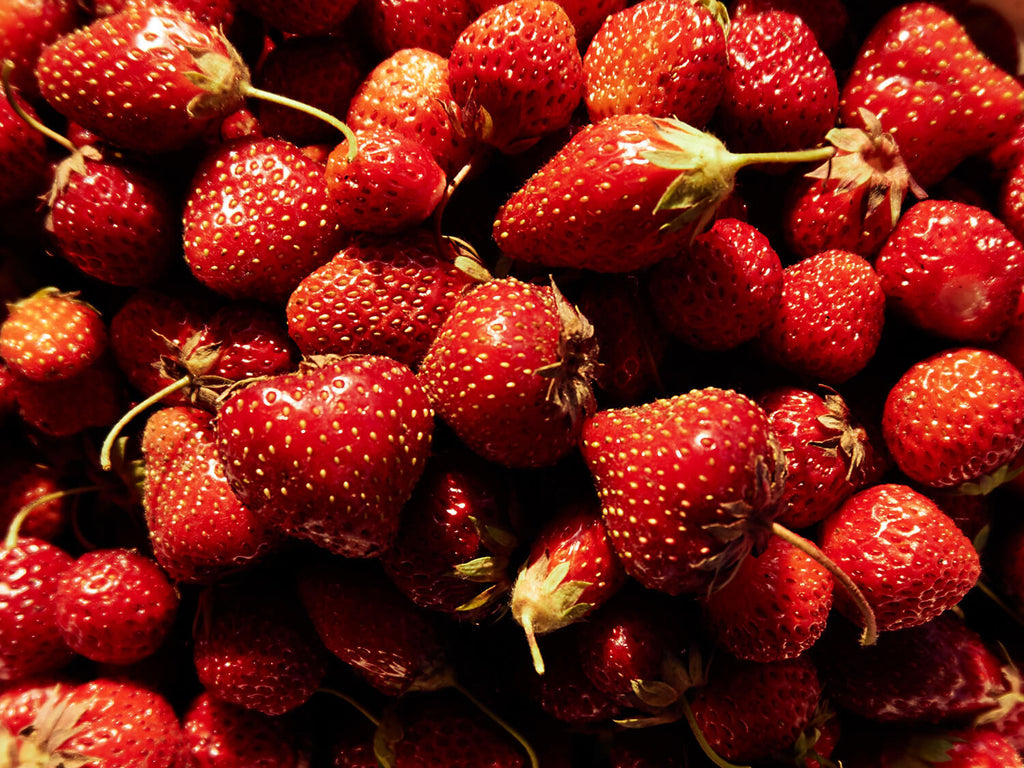Why Are Crickets So Expensive?
If you've heard all the hype around cricket protein, you may still have a lingering question. If crickets r...

Food waste has serious implications for public health and the environment. Learn the facts on food waste, and how you can help reduce food waste at home.
It’s estimated that 821 million people are hungry worldwide. Meanwhile, one-third of global food is wasted each year. That equates to approximately 1.3 billion tons of wasted food per year. Not only are people starving, but the repercussions of food waste reverberate much further beyond hunger and wasted food.
In order to grow crops, you need a lot of water. That water travels from glaciers to streams, and rivers, and then is typically withdrawn into irrigation systems which feed into farms. It’s estimated that 70% of global water usage is for agricultural purposes. When food spoils or goes uneaten, it’s not only food waste that occurs, but also water waste.
When food waste ends up in the landfill, it also contributes to global warming, by producing methane which is a 26 times more potent greenhouse gas than carbon dioxide. According to the Food and Agricultural Organization of the United Nations, food waste accounts for 8% of man-made greenhouse gas emissions.
With so many implications, how can we help reduce food waste, and reduce its impact on society and the environment? It starts with defining food waste and understanding where waste can occur as it passes from the farm to homes, restaurants, and stores.

This might seem obvious, but in general food waste refers to any food that ends up being thrown away, rather than consumed. So, rather than ending up in your belly, it might end up rotting in the garbage emitting methane.
To help measure and curb food waste, governments and organizations have articulated precise definitions. In the United States, the Environmental Protection Agency (EPA) defines food waste as “uneaten food and food preparation wastes from residences and commercial establishments such as grocery stores, restaurants, and produce stands, institutional cafeterias and kitchens, and industrial sources like employee lunchrooms.”
In the United Nations, food waste is defined slightly differently. They define it as the discard or alternative use of food that is considered safe for human consumption. That means that food used for compost, bioenergy or animal feed is counted as food waste, which has drawn some criticism since the food is technically being used, just not for feeding us.
Regardless of how you choose to define it, the consensus is that we’re wasting a lot of food that could be used to feed people.
For most people, the obvious place where we see food waste is on our plate or in our fridge. It’s the food that remains on your plate at the end of a meal, that’s scraped into the garbage. It’s the moldy beans in the back of your fridge that you forgot were there a week ago, and now are being ejected into the trash can.
This kind of food waste is certainly a problem. Americans throw away an estimated 40% of the food that’s safe to eat. This waste equates to a loss of $165 billion. But it’s not only on your plate where food waste occurs.
Food waste can happen anywhere throughout the four stages of the food supply chain:
In the U.S. and other industrialized countries, it’s estimated that 40% of losses occur at the retail and consumer level. In developing countries, those same losses occur at the production and processing stages of the food chain.
Food is lost during the production stage for one of two reasons. Either the food is left unharvested, or it’s lost somewhere between being harvested and then sold.
Each year, farmers face the challenge of planning out their crops to meet market demands while also providing a buffer against unforeseen interferences from weather, droughts, disease, and vermin. With all of these variables, it’s difficult to match demand precisely, and it’s estimated that 20 billion pounds of produce are lost each year on farms.

If crops are damaged by pests or weather, they may go unharvested. If the crops are unharmed, excess bumper crops may exceed the market demand, lowering the prices. In this case, produce sometimes goes unharvested because the costs of harvesting exceed the value that can be obtained from selling the additional crops. Crops can also remain on the vine when food safety scares happen, like potential salmonella outbreaks.
Increasingly, labor shortages have also become a reason for unharvested crops. In 2011, the Georgia Fruit and Vegetable Growers Association estimated crop losses of $140 million due to a shortage in harvest and packing workers.
During food processing, a sizable amount of food is lost from trimming. This often occurs in manufacturing settings when edible (skin, fat, peels, skin) and inedible portions (bones and pits) of food are removed. The efficiency of trimming and food waste production at this stage wildly varies as certain foods can produce more waste during trimming than others.
Like most things, there are benefits and drawbacks to trimming foods prior to selling it. First, trimming during processing may actually reduce food waste compared to the end-user trimming it. Trimming food prior to sale also allows manufacturers to sell “ugly produce” that might typically be discarded. Pre-trimmed produce is also convenient for food service or quick home meal preparation.
However, the drawback is that pre-trimmed produce often spoils quicker and that it requires extra packaging for protection during transport, which thus contributes to packaging waste and single-use plastic which also impacts the environment.
The food waste from U.S. retailers is estimated to account for approximately 8 million tons, equating to a loss of $18.2 billion. Wasted meat, produce and baked goods are often seen as the cost of doing business. In fact, Executives often actually look at food waste as a positive indicator for business. If there is low waste, the store might not be adequately stocked, and negatively impact customer experience. Or, if there’s not enough food waste, it’s sometimes seen as an indicator of poor quality control since most stores try to remove blemished items and keep shelves stocked.
Much of the food waste in retail can be traced back to certain marketing, or display practices that are intended to increase sales. Stores fully stack displays with brimming fruit and remove produce with imperfections because they believe it’s more enticing to consumers. Slightly bruised, or misshaped, edible produce is discarded.

Another common cause of food waste in grocery stores occurs when foods near their “sell by” date, even though it’s rarely mandated by law. Unlike “use by” or “best by” dates, it’s still legal and safe to sell foods past their “sell by” dates. The “sell by” date is intended to help stores with stocking and it just indicates that the food might have a limited shelf life left. However, stores often remove products 2-3 days before their “sell by” date to cultivate an image of freshness in their store.
Confusion around food labeling and expiratory dates is actually considered one of the leading causes of food waste in America.
It’s estimated that 4-10% of food purchased by restaurants is wasted before your meal even reaches the plate. Once it does reach the customer’s plate, the food can still end up in the trash, as diners on average leave 17% of their meals uneaten. Part of this is due to oversized portion sizes, which although wasteful, can boost the meals’ perceived value among patrons, although an estimated 55% of leftovers are still left behind at the restaurant instead of taken home.

Restaurant food waste can also accumulate due to corporate policies. At McDonald’s, there is a policy that requires hamburgers to be thrown away after 20 minutes if not served, and fries after 7 minutes.
Although food waste occurs throughout the supply chain, it’s within our homes where we have the most direct control to reduce food waste. Approximately 76 billion pounds of food are wasted in U.S. homes each year. The average family of four wastes up to $2,275 per year in food waste and 25% of the food they purchase ends up in the garbage.
Here are a few of the main reasons food waste occurs at home:
We’re all guilty of wasting food. It’s easy to overestimate food quantities. Then leftovers get tucked in the back of your fridge, evading your eyes and appetite. When you perform your monthly fridge purge, it might feel like food waste is inevitable. But it’s not.
In 1987, a study showed that people living through the Great Depression and World War II wasted half as much food compared to other age groups. So, if the greatest generation can do it, so can you. You just need to know where to look.
Understand Your Expiration DatesYou might be throwing food away, while it’s still perfectly safe to eat. The key is to understand the product expiration dates, which can be misleading.
Use By Date - This date is a recommendation that’s provided by the manufacturer, and it does not pertain to food safety. Instead, it’s the manufacturer's assessment of when the product should be used by to maintain the highest quality. It’s often safe to consume the product after that date, but the product might be less fresh, or the quality might begin to deteriorate beyond this date. You might see this alternatively labeled as “best if used by”, which is the same thing.
Best By Date - The “best by” or “best if used by” date is the same as “use by”. This is a date set by the manufacturer to maintain quality, and help guide stores for restocking purposes. Food can be safe to eat after the “best by” date.
Expiration Date - You will often see the expiration date printed on meat and dairy products, which is required in some states. This date signifies when the food will most likely spoil, or begin to spoil by. You can sometimes still freeze meat on or prior to its expiration date to maintain quality.
Sell By Date - Some products will also include a “sell by” date which tells grocery stores when to remove items and restock their shelves. However, food items are commonly safe to eat after the “sell by” date at home. Milk, for instance typically includes a sell-by date, but it can still be okay to drink several days to a week after the date if it’s properly stored.
If those manufacturer based sell-by dates aren’t so straightforward, what are you supposed to do? Here are a few tips to help you recognize spoiled food, that’s not safe for consumption.
Does it pass the sniff and sight test? Look for growth or white fluid. Smell meat and milk for off smells. In most cases, food mold, like the kind on cheese, can simply be removed.
Use the rule of 4’s. Refrigerate your food leftovers at 40 degrees Fahrenheit or 4 degrees Celsius for no more than 4 days. If you’re not sure how cold your temperature is, buy a thermometer to store inside so you can rest assured that everything is stored safely.
Once you get your food home, storage is key to maintaining freshness. In food service, they use the FIFO method to help manage their inventory. FIFO means First In, First Out. When storing items in your pantry or refrigerator, you’ll want to organize things so that the oldest items are the ones stored up front so they are the most accessible. That way the old food items are used first, and not abandoned in the back where they’re hidden from view.

If you’re not going to use your food soon, it can also be stored in the freezer to retain its nutrition and extend shelf life. If you don’t tend to like leftovers the day after you just had the same meal for dinner, store it in the freezer for later use. Soups, stews, and chilis freeze and thaw particularly well for later use. Plus, they create a convenient meal when you need a quick fix.
You can typically buy products at a discount right before their expiration date, and then toss them in your freezer for later use. Most grocers will discount meat several days prior to the expiration date. You can snatch it up and toss it in your freezer to save money.
Lastly, you can write your own date label to foods when you add them to your fridge or cupboard. Use a felt-tipped pen or stickers to label foods with the date they were opened. This will help to remind you of which foods are fresh and make it easier to manage your food inventory.
If you go to the store without a plan, it’s easy to overspend and make impulse buys. This often leads to wasted food and wasted money. You can save yourself the waste by planning out your food expeditions. Before you go, pick out your recipes, the number of servings you’ll need, and make a list of the items you need. This can also help you eat a healthier diet.

Composting won’t reduce food waste. But it does help return nutrients to the soil, and reduce methane production when food waste does occur.
An estimated 19% of landfills consist of food scraps. In the landfill, food waste is primarily broken down aerobically, which produces more methane than composting. When food waste is composted, it primarily decomposes anaerobically, which does not produce methane. Since methane is the second most prevalent greenhouse gas, and 25 times more impactful on climate change than carbon dioxide, there’s a serious environmental benefit to composting food waste. Plus, the nutrients can be captured and used to grow more food. It’s a win-win situation.
Accordingly, a number of cities around the U.S. have begun to encourage composting. New York now requires businesses to compost restaurant food waste. Many cities allow residents to add compost to their yard waste bins for pickup. You can check in your area to see if this service is available, or create a backyard compost system of your own.
Hopefully, after reading this, you’ve thought of some ways you can reduce food waste in your own life. Or maybe you have some more ideas on how to reduce food waste. If so, share them with us. By sharing ideas, we can commit to reducing food waste together.